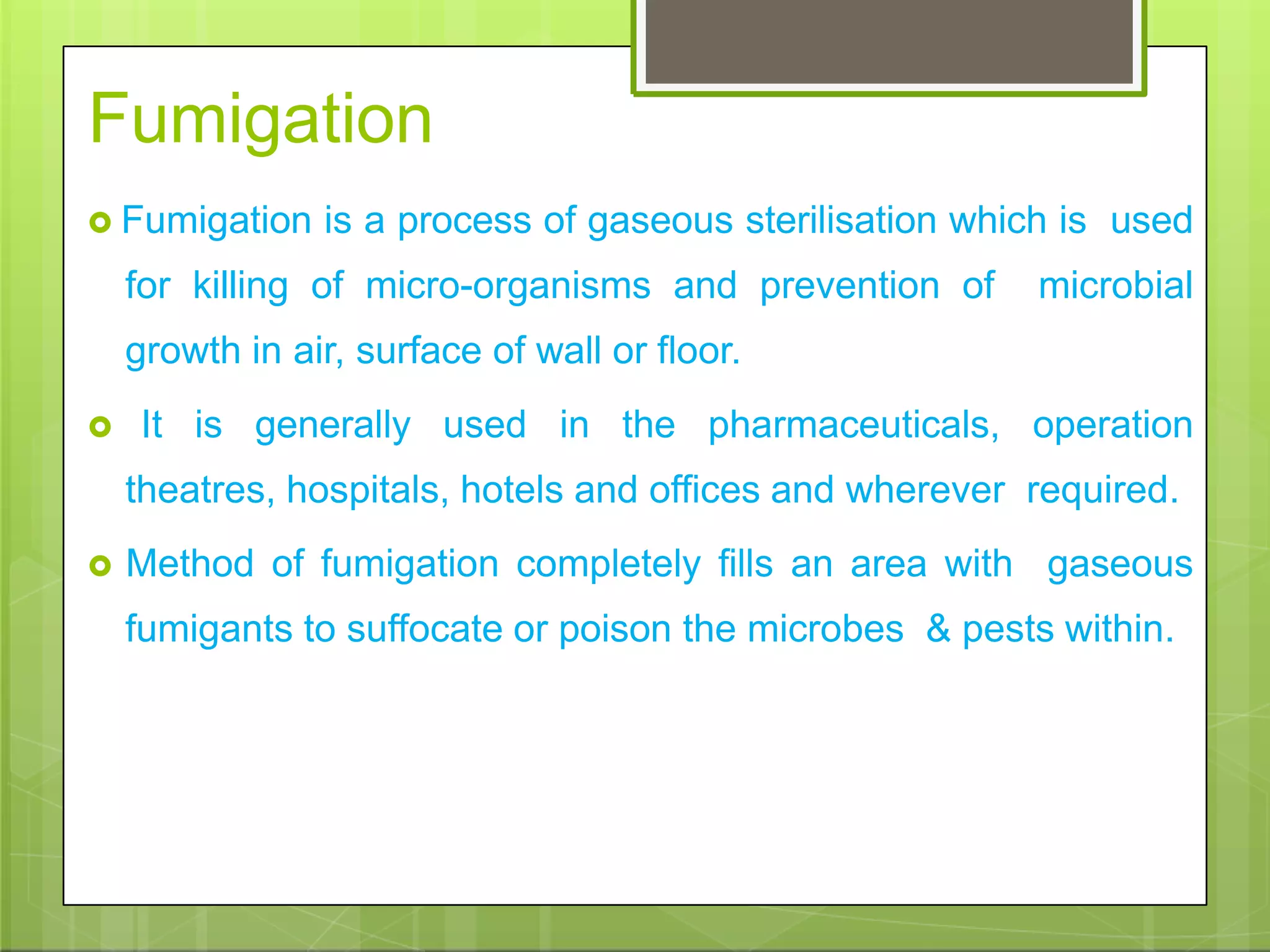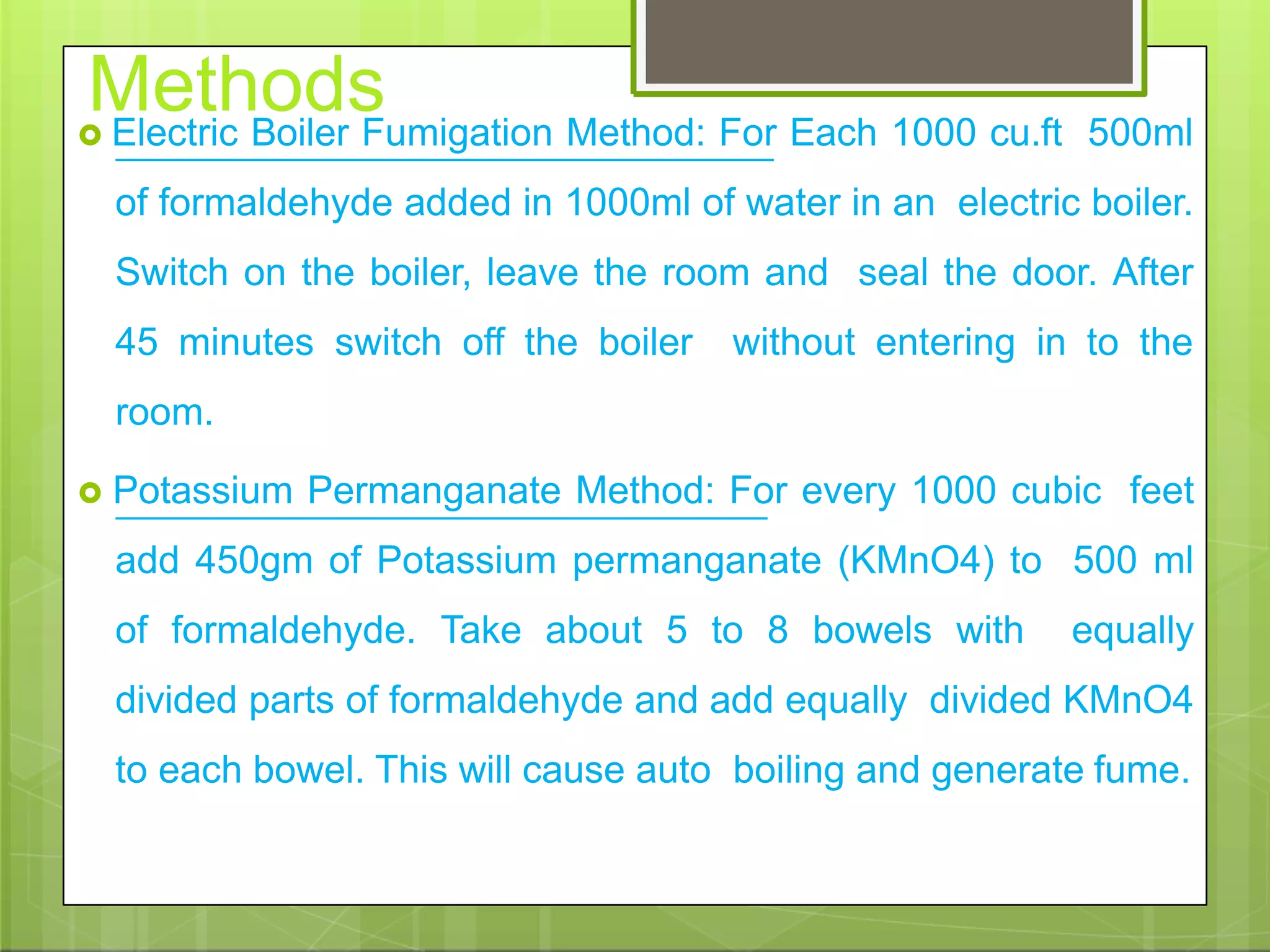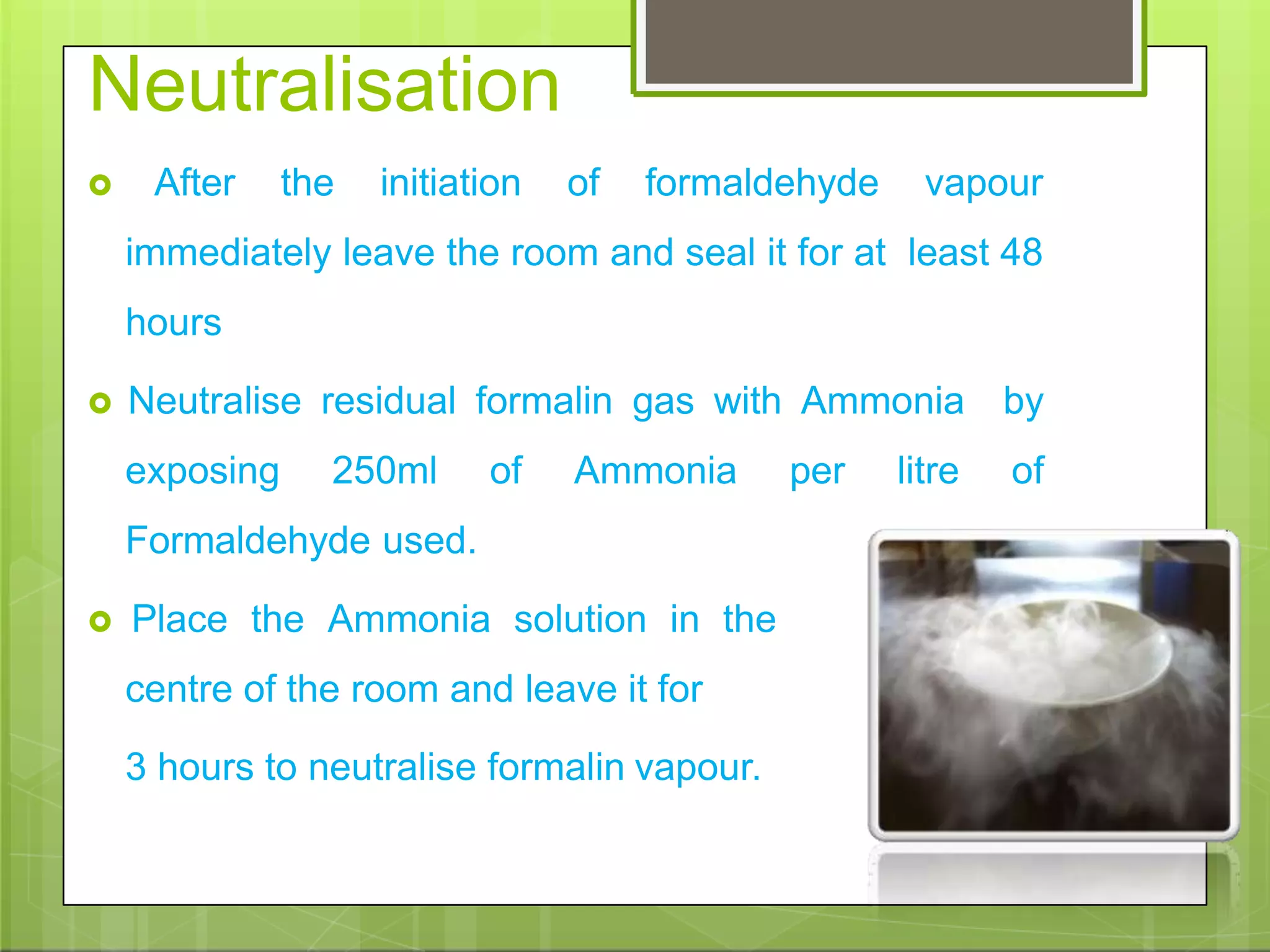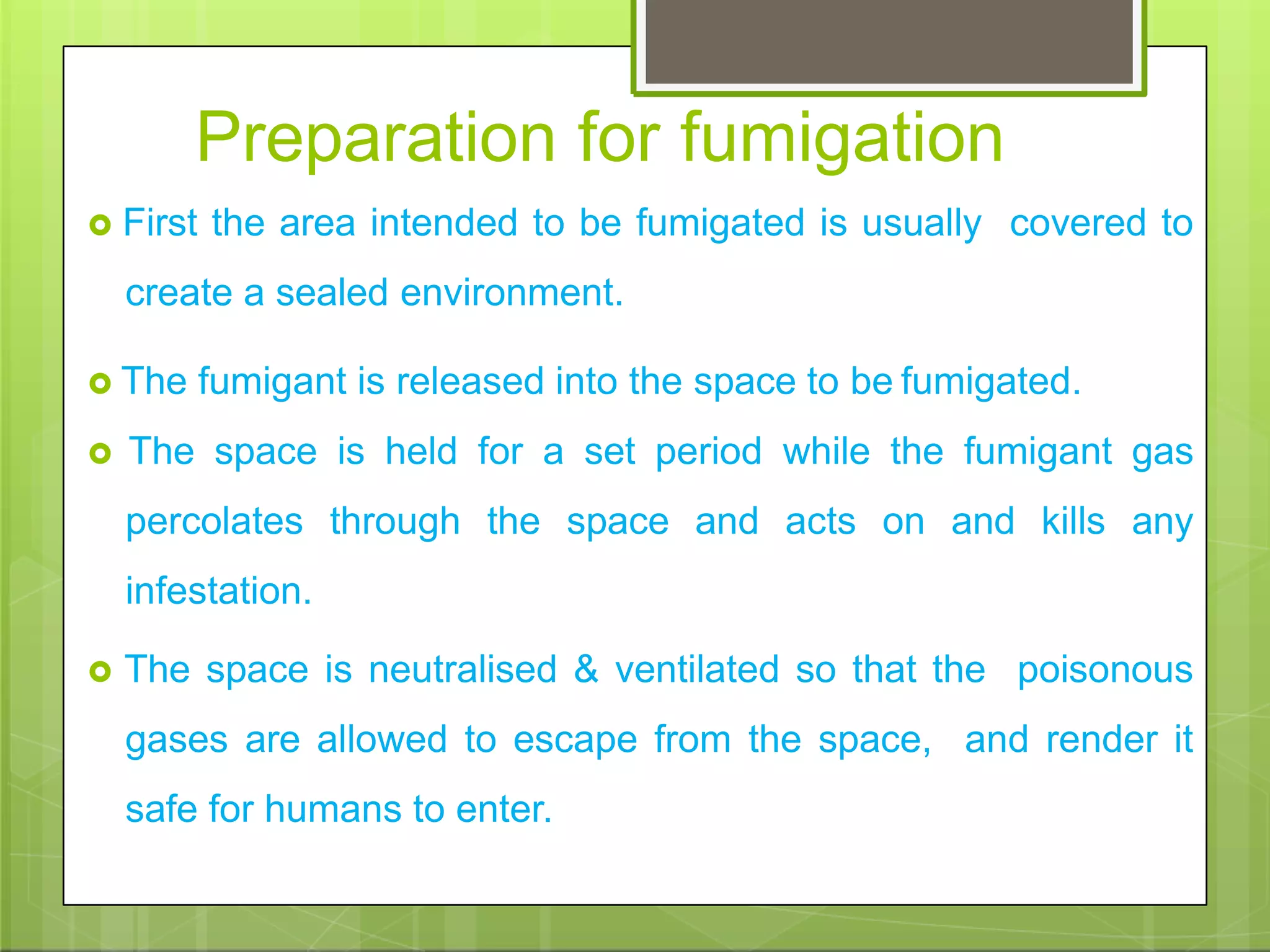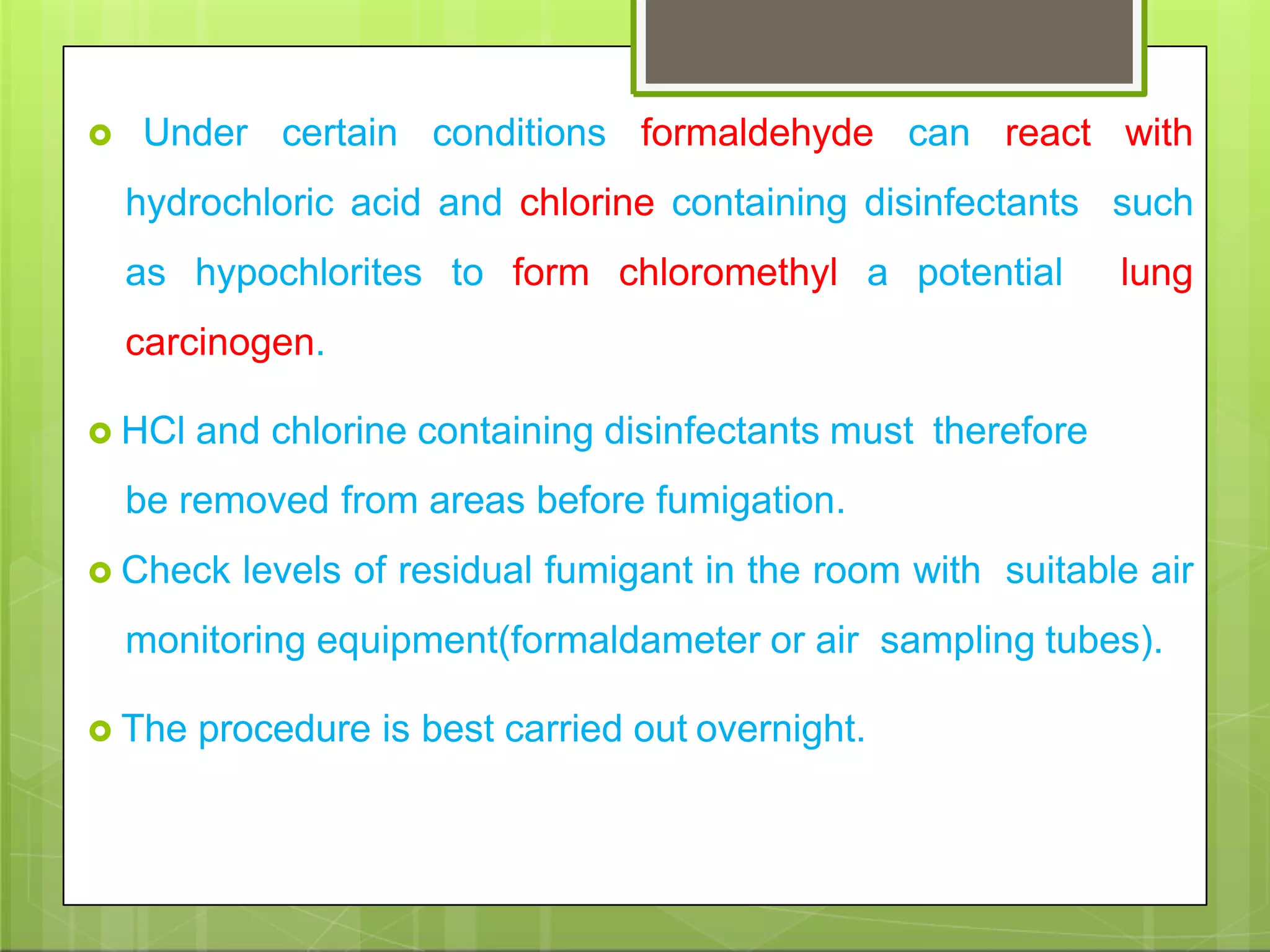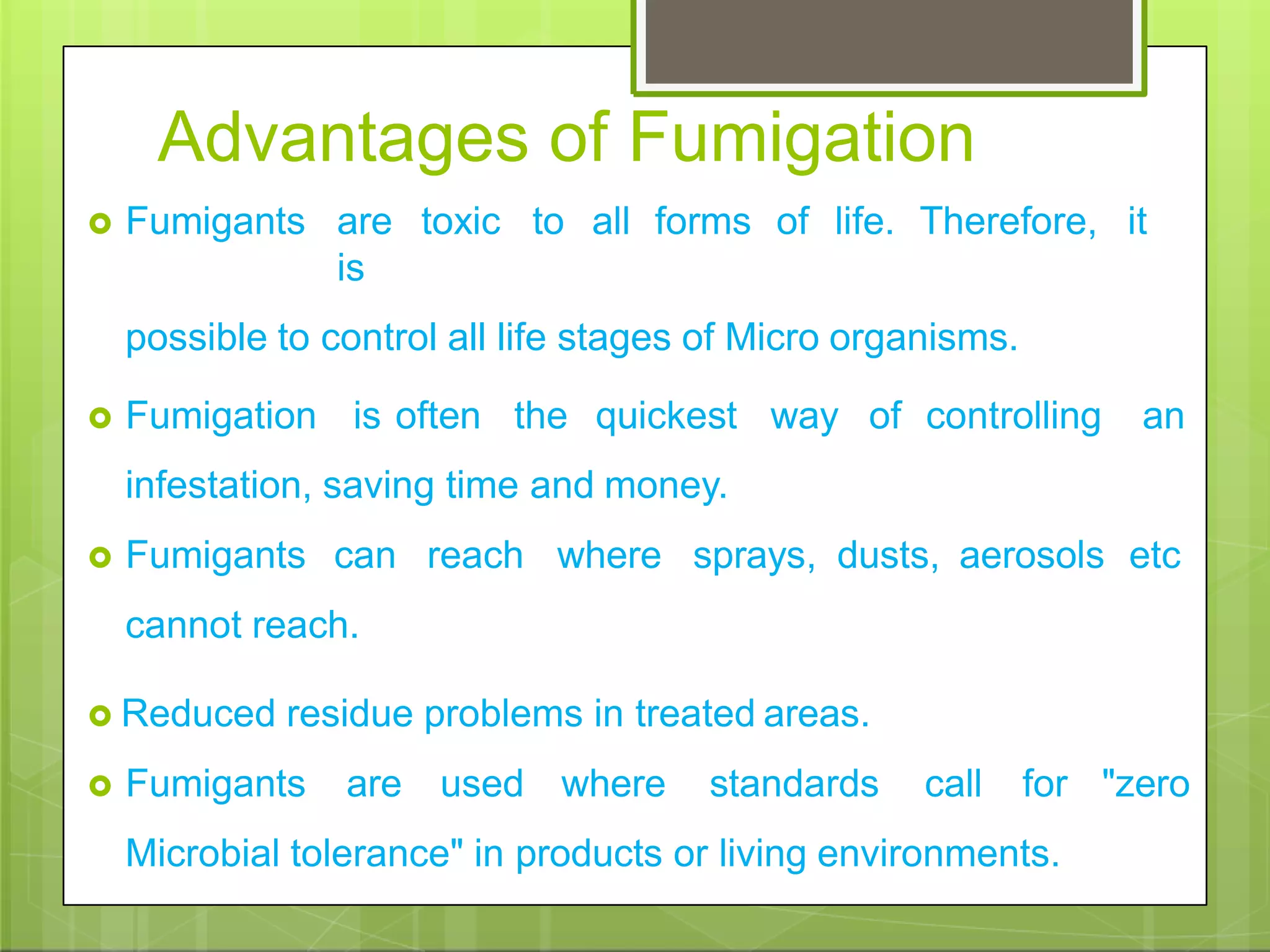This document discusses fumigation as a process to sterilize operating rooms. It describes various fumigation methods and chemicals used, such as formaldehyde and phosphine. Formaldehyde is commonly used to fumigate operating rooms by heating a formaldehyde solution to generate gas. The room is sealed for hours to allow the gas to kill microbes before ventilating. While effective, formaldehyde is a potential carcinogen. Alternative sterilization methods aim to provide sterile environments without toxic fumigation chemicals. Strict cleaning and ventilation standards combined with limiting staff traffic can sterilize operating rooms safely.



